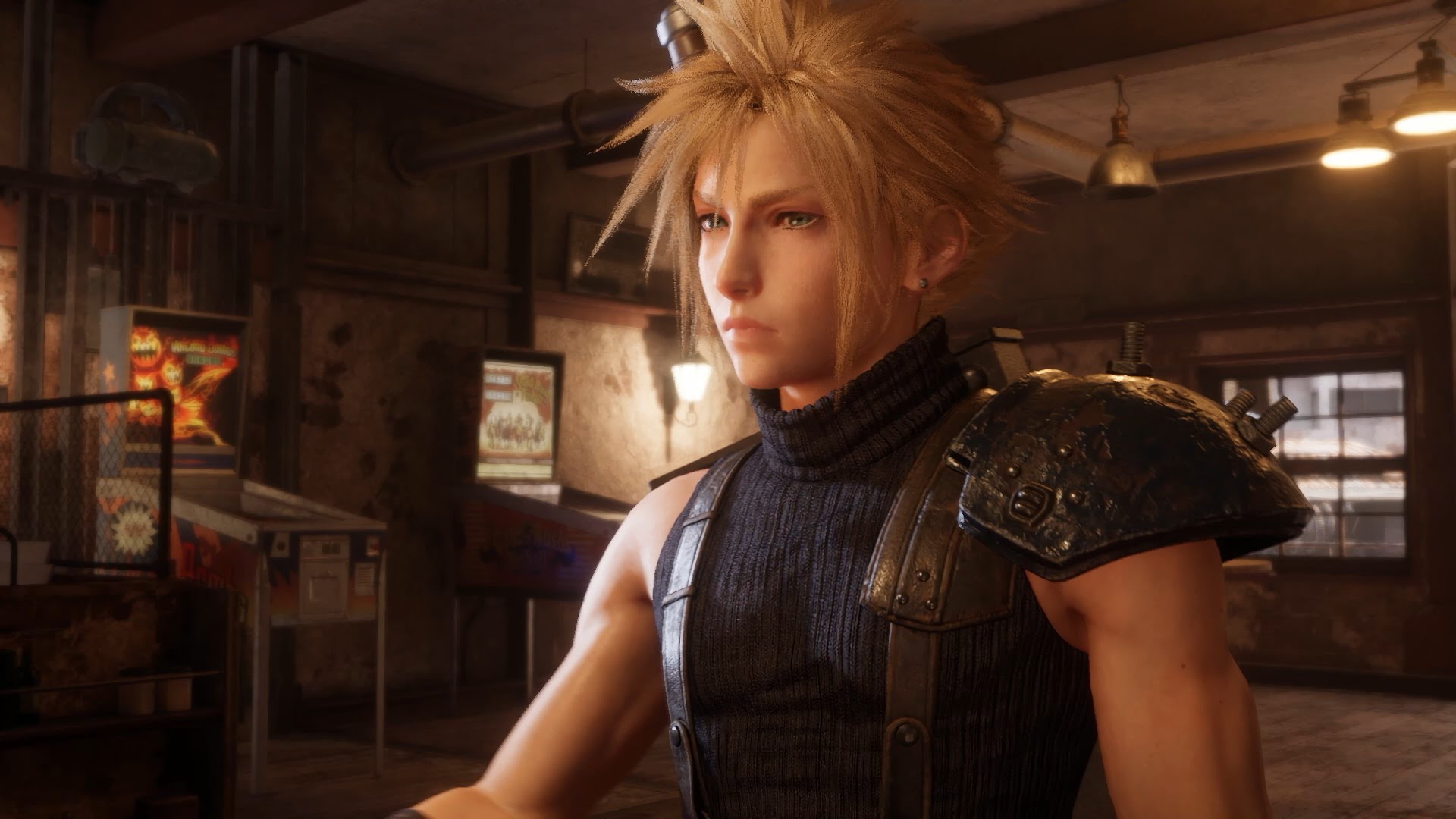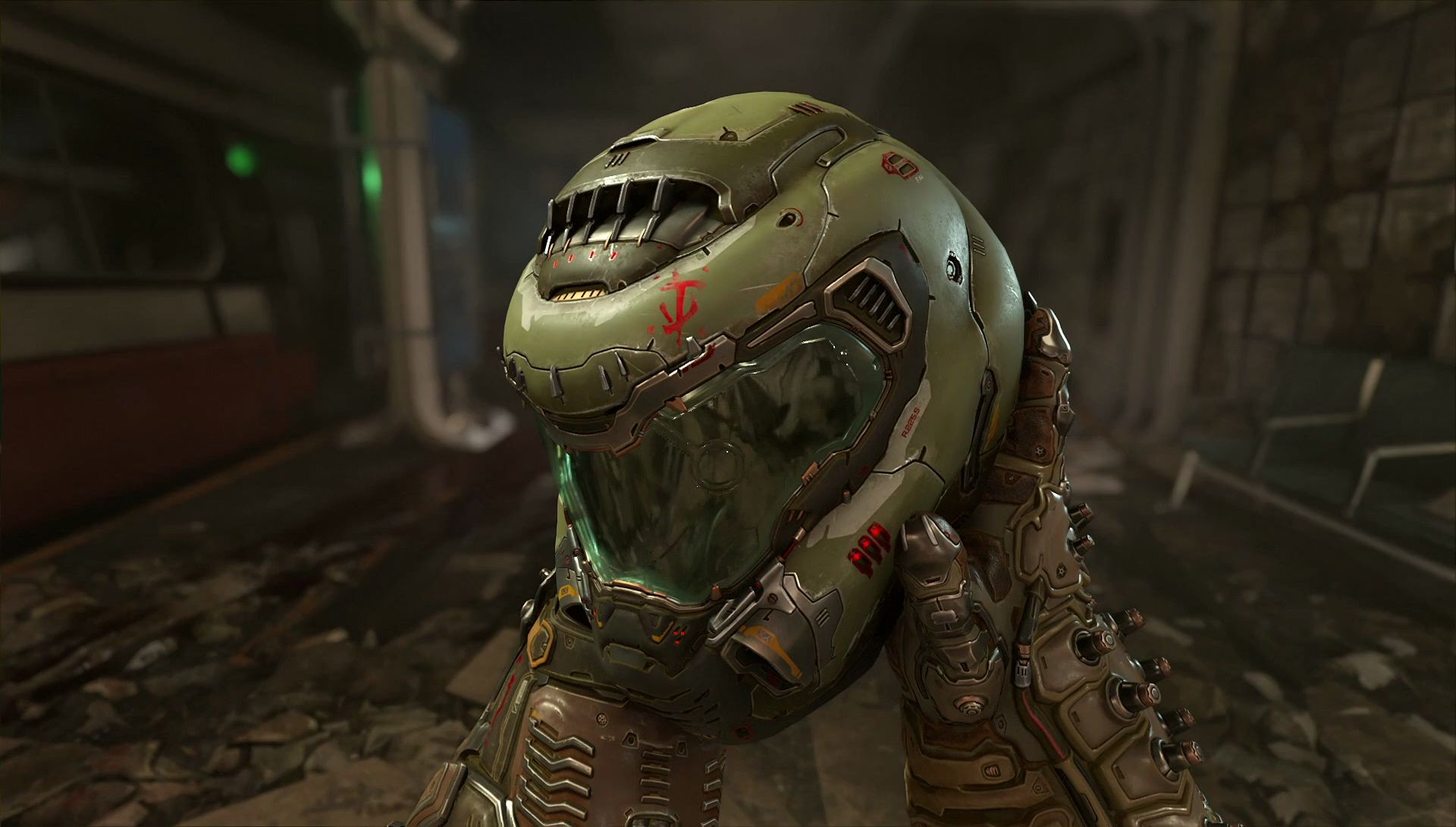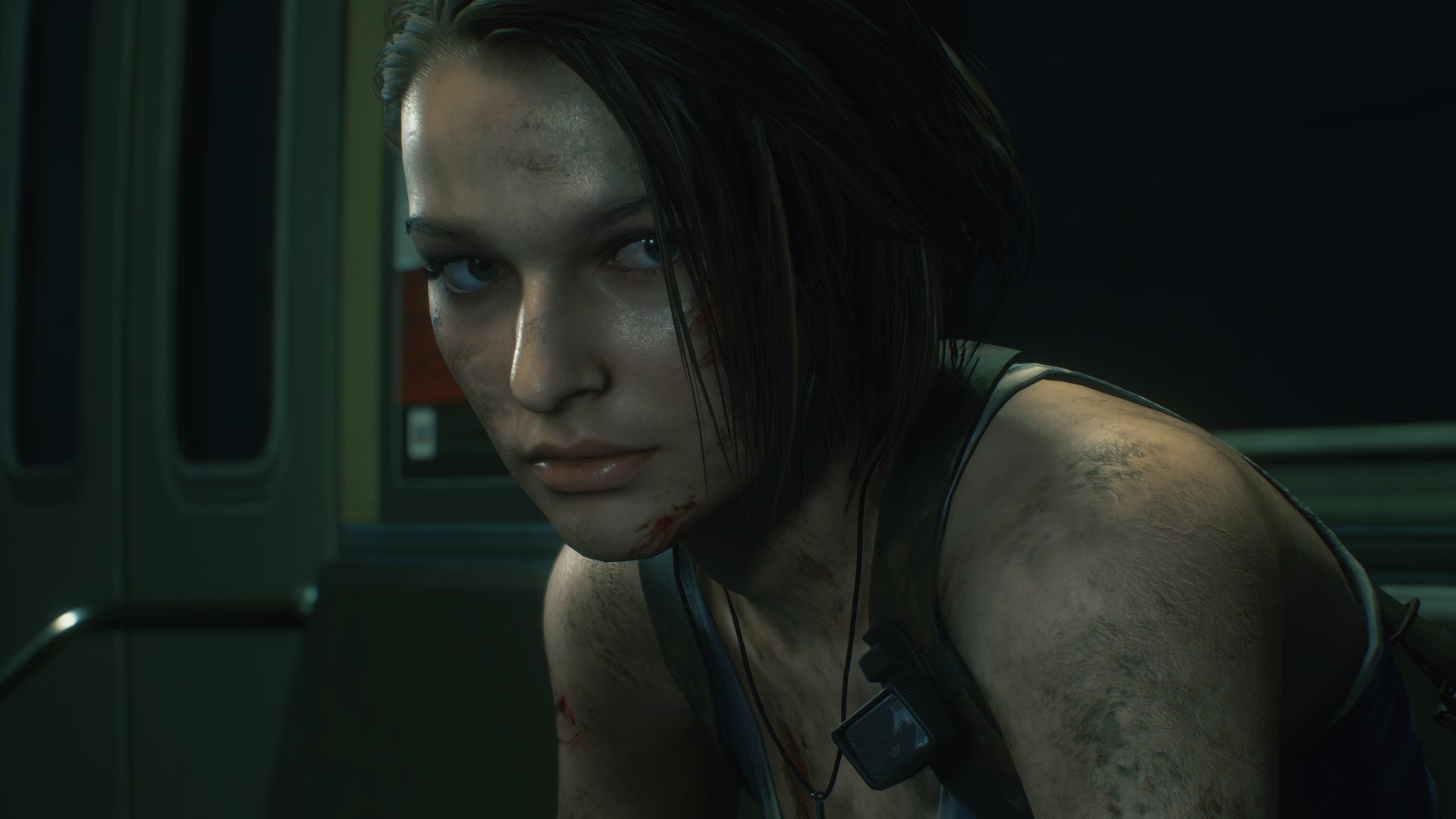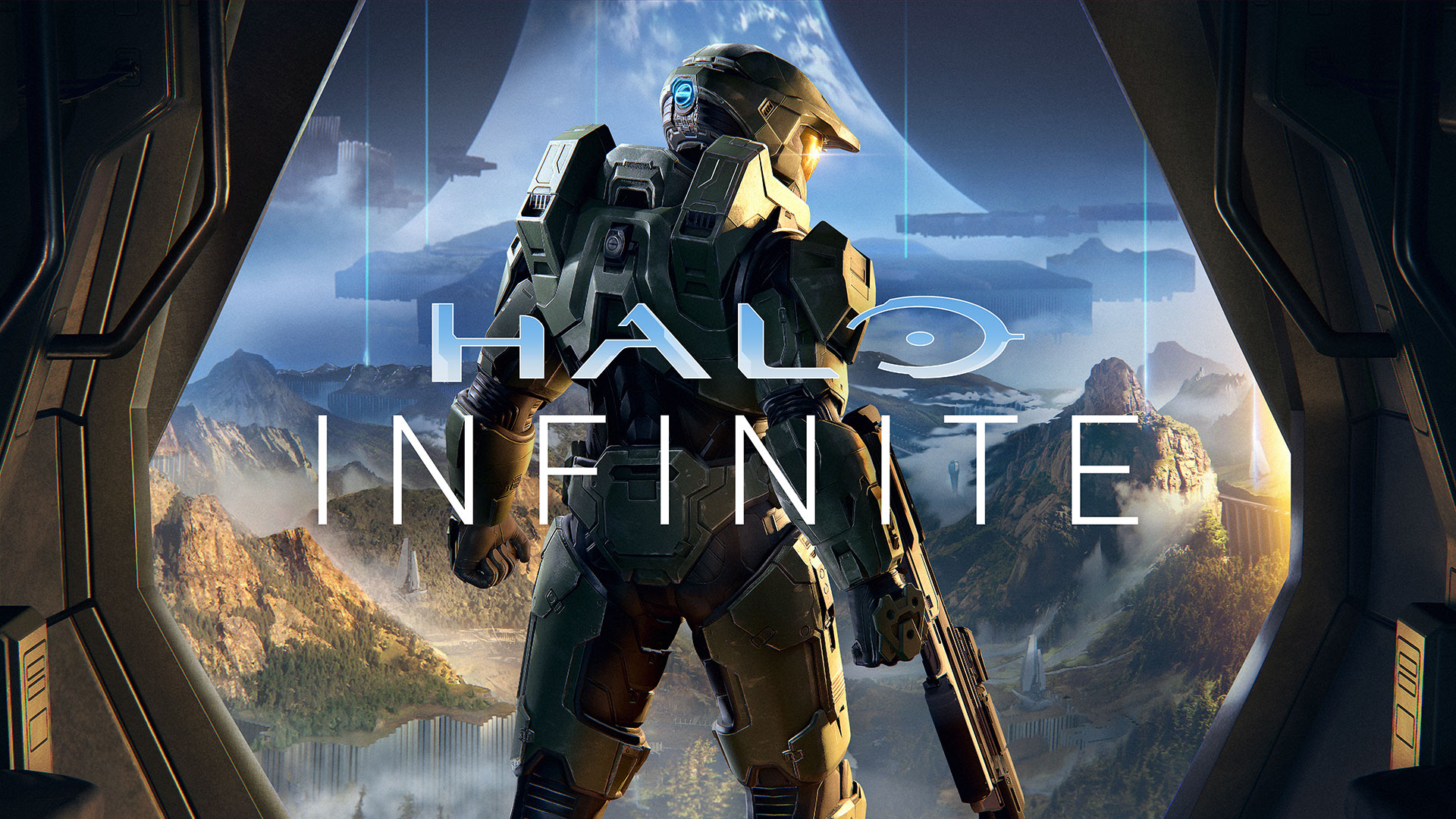
Games come and go but some icons live forever. These are the characters that we grew up with, as their designs changed with the times and technology. Let’s take a look at 5 of the biggest evolutions of our favourite characters, starting with an RPG classic.
Cloud Strife – Final Fantasy 7 to Final Fantasy 7 Remake
The iconic Cloud Strife from Final Fantasy 7 will be making his return soon in the remake. However, the process behind his iconic look is interesting – the spiky hair was meant as a contrast to antagonist Sephiroth but also to keep the polygon count low. Final Fantasy 7: Advent Children – and by extension Crisis Core – saw Cloud have a realistic design for the first time with defined hair and facial features. Numerous models were used to capture different expressions and Cloud’s general attire combined elements of his old outfit with a darker, more contemporary look. The overall aim was to showcase how much time had passed in the world and how the guilt of losing Aerith weighed down on him.
In Final Fantasy 7 Remake, Cloud once again sports a more realistic look in keeping with the game’s high fidelity approach. His hair and facial expressions are more defined; the overall outfit has a darker look in keeping with Advent Children; and several elements like the waistband, baggy pants and boots are toned down to look more proportionally accurate. Regardless, this is Cloud Strife through and through.
Doom Marine/Slayer – Doom 1 to Doom Eternal
Though mostly represented as the gun mowing down demon hordes, the Doom Marine or Doomguy had a distinctive design. A helmet covering his entire face, save for a visor over his eyes; chest armor with short sleeves; and the signature green shade adorned the entire set. It was iconic and meant to represent the Marine as a human facing overwhelming odds. Doom 2 didn’t make any major changes to this design. The older games emphasized sprites over full 3D models and this was reflected in whatever we saw of Doomguy.
In Doom 3, however, the human aspect of the Marine was emphasized more, showcasing his face fully. The clothing is more distinct from the armor (he now wears a separate t-shirt below the same); the ab window below the chest plate is covered up; and the pauldrons are more accentuated. All of this to reinforce the Marine being prepared but not overwhelmingly powerful, perfect for the game’s survival horror approach. The Marine was packing an estimated 4400 to 5000 polygons and id Tech 4 allowed for real-time light computation, MegaTextures and shadow volumes to bring the world to life in a creepier way.
With DOOM in 2016, id Software made significant changes to the protagonist. Known as the Doom Slayer now, he had full-body armor with more plating, weathered textures, darker shades of green, and a significantly taller build. It fit well with the Slayer’s motif of being an unstoppable badass that could shred entire armies of demons. The game was developed on id Tech 6 which sported physically based rendering, SMAA and TSSAA anti-aliasing, bokeh depth of field and HDR among many other features, with the aesthetic feeling more heavy metal and visceral than previous titles. Ample amounts of gore and hellish landscapes never looked better.
DOOM Eternal takes the same design, bulks up the Slayer further and adds new weapons like the shoulder mounted cannon and arm-blade. There’s also a return to the classic short sleeves worn by previous Marines.
Jill Valentine – Resident Evil to Resident Evil 3 Remake
An abject professional at heart and in stature, Jill Valentine was designed by director Shinji Mikami and designer Isao Oishi as an anti-thesis to overly sexualized characters. Sporting tactical boots, gloves and a beret, Jill is as no-nonsense as they come. It’s interesting to note that her outfit in Resident Evil 3 received some criticism at the time for going against Mikami’s initial philosophy.
In the HD remake of Resident Evil 1, Jill’s likeness was based on actor/model Julia Voth. This likeness would define Jill’s look for a number of titles including Resident Evil 5, which saw her undergo the most radical change in design yet. Though the shock value of Jill’s return was palpable – especially with the set-up for her apparent demise – many fans reacted negatively to her form-fitting outfit and blonde hair. Resident Evil: Revelations would see Jill adopting a wet-suit in keeping with the infiltration of the Queen Zenobia cruise ship while retaining aspects of her original design. Perhaps the most surprising bit was seeing her with a ponytail instead of the trademark cropped hair.
In the upcoming Resident Evil 3 remake, Jill’s design has changed once again. Model Sasha Zotova provides her likeness, offering a harsher touch to Jill’s expressions. While the clothes have been kept casual, the darker colours, combat boots and tactical gloves reinforce Jill’s status as a former special ops soldier. The RE Engine also provides more freedom for additional details like dirt, grime, cuts, bruises and sweat. How Jill’s demeanor and overall character will change remains to be seen but so far, the design is in keeping with her original approach.
Master Chief – Halo: Combat Evolved to Halo Infinite
It’s easy to underestimate just how many changes Chief’s attire has gone through in the years. This is explained in-universe as upgrades to the Mjolnir Armor. Master Chief was first designed by Bungie developer Robert McLees, art director Marcus Lehto and concept artist Shi Kai Wang. After receiving some more muscle, the Chief would receive his trademark green shade and we got the motorcycle helmet-esque wearing marine in Halo: Combat Evolved.
Halo 2 saw the armor gain much more definition, both in terms of details, texture quality and polygon count. Instead of bright green, Bungie opted for a darker shade. This was carried over into Halo 3 where the armor looked more singular as opposed to a variety of armor sections. Improvements to lighting gave more definition to all of the details, and it felt like the Chief had truly made a generational leap. Then 343 Industries took over the franchise with Halo 4 releasing in 2012.
If Master Chief wasn’t a space marine before, it was heavily reinforced this time. His armor was highly detailed with several more components and looked to have Kevlar weaved into the mesh. Eventually, this gave way to a more streamlined design in Halo 5: Guardians. The overall tone felt less busy and seemingly a combination of the designs in Halo 3 and 4.
With Halo Infinite, 343 Industries is making a rather interesting return to the Mark VI armor from Halo 2 and 3. The green tint is more vibrant than before and the shoulder pads are more defined than Bungie’s iterations. But this feels, once again, like a natural evolution of Chief’s design from the older games.
Link – The Legend of Zelda to The Legend of Zelda: Breath of the Wild 2
The Legend of Zelda is an amalgamation of timelines, alternate universes and reincarnations. However, throughout it all, the hero Link has always maintained his signature blond hair and green tunic. Designed by Shigeru Miyamoto, Link started out as a simple sprite in a top-down perspective. He gained more detail and colour in Zelda 2: The Adventure of Link, mostly due to the game’s side-scrolling nature, but The Legend of Zelda: A Link to the Past returned to the top-down perspective with a much more defined sprite with more colours.
From there, Link would see a number of design changes depending on the game. The Legend of Zelda: Ocarina of Time saw the hero in full 3D for the first time and, as a contrast to previous adventures, featured an adult version with sharper facial features and a white undershirt and pants. The Wind Waker depicted Link with a cel-shaded style channeling the animated style and energy of the adventure with complex facial expressions and animations. Games like The Minish Cap would channel this style, emulating Link’s bright blond hair. Link’s model was about 2600 to 2800 polygons – this would be quickly surpassed by Twilight Princess, which saw our hero in a mature form right off the bat. His overall outfit was a darker shade of green with more defined gauntlets and even brownish blond hair.
For Skyward Sword, Link was a teenager but his outfit returned to the bright green shades of yore while his gauntlets were replaced by gloves. The overall aesthetic was more fantastical as opposed to the gritty atmosphere of Twilight Princess while borrowing some cel-shading from The Wind Waker. Brighter colours to reflect the game’s emphasis on the sky.
It’s interesting when you look at Breath of the Wild – Link’s design went through a number of changes including variants of the blue tunic that eventually made it in. Cel-shading was applied again, giving the world a more stylized animated feel without going over the top like The Wind Waker. With the upcoming Breath of the Wild sequel, Nintendo seems keen on replicating the same look, with Zelda taking some cues from it as well, perhaps hinting at her being a playable character.


















